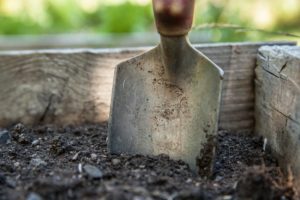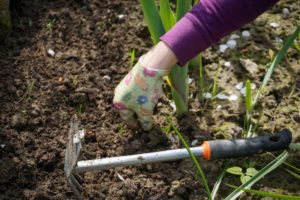Spring Gardening: How to Prepare your Raised Beds for Spring Planting
Spring gardening signifies the end of a cold winter and the beginning of a new season. When we think of spring gardening, vibrant colors and texture come to mind, which are a far cry from the often dark, dreary and dull days of winter. Now that spring is getting closer, it’s time to start thinking about how to prepare our raised beds for spring planting.
Advantages to Raised Bed Gardening
Before we dive into how to prepare our raised beds, let’s discuss the advantages of raised bed gardening. Below are a handful of benefits:
- Better drainage
- Less weeding
- Less maintenance
- Longer growing season
- Soil gets warmer quicker
- Faster root growth
- Soil is less compact (it’s not being walked on)
- Less runoff
- Grow more crops
Now that we know how advantageous raised bed gardening can be, we will focus on all the ways to prepare your raised beds for the spring gardening season. Once we get the preparation work out of the way, gardeners can breathe a sigh of relief and start enjoying the fun part!
Let’s take a look at a spring gardening checklist to get your raised beds prepared for the new season.
Spring Gardening Prep: Testing the Soil

Tending to your soil is the first order of business before jumping into planting. This can be done before spring arrives so that you’re good to go once the frost is gone and all signs of winter are long gone.
However, don’t get overzealous when it comes to soil prep – if the ground is still frozen, then it’s still too early to start soil prep. Plants need loose soil to grow and flourish. Take a handful of soil in your hand; if it’s compact, still frozen and too wet, wait a few more weeks for it to thaw.
If the soil is ready, here’s where to begin:
- Loosen it up as much as possible by tilling
- Start mixing in mulch
- Add compost
- Do a soil test for pH and nutrient levels to determine what specific materials it needs
Spring Gardening Prep: Weeding

The good news is weeds don’t have as much room to grow in raised beds as they do in an in-ground garden, but weeding is still an order of business to attend to in order to prepare for spring. Think of weeding as creating a blank canvas for new plants to come in and flourish.
Track any invasive roots to the source and pull them out the same direction they came from. Containing your weeds will create a healthy environment for your spring plants to thrive. Looking for a way to keep the weeds out for good? We have ideas for DIY organic weed killers that actually work.
Spring Gardening Prep: Raised Bed Repairs

Inspect the corners of your raised beds for any repairs needed. Over the winter, the soil can get heavy due to the harsh weather and corners that have nails or screws can loosen or bow.
It’s best to do your raised bed inspections before you start planting for spring, because repairs can impact the quality of your soil and adjustments will have to be made to make it right again.
Spring Gardening Prep: Fertilize

Fertilizing is an important step in spring gardening prep. Even the healthiest soil can benefit from fertilizer, and fertilizing should be done before planting annual vegetables and flowers.
Covering the soil with mulch after fertilizing and when the weather starts to warm up a bit will help retain the heat and discourage weed growth.
Raised Bed Spring Gardening Prep: Conclusion

There you have it. Your soil is tested, your weeding is finished, raised beds are repaired and your raised beds are fertilized. When the weather permits, it’s time to start planting and enjoying your spring garden.
After doing your prep work, our biggest piece of advice is not to rush it. If you start your spring planting too soon, when the soil is still somewhat frozen and too wet, your seeds won’t get enough air circulation and will die prematurely. Be patient and wait until the soil is warm to start planting.
Find & compare the world’s best garden suppliers for vegetable seeds or flower seeds to use in your garden. Garden Savvy is the gardening catalog of catalogs. Search our gardening database now!
Recent Posts
- Smart Gardening: How Technology Is Revolutionizing Horticulture
- Understanding Gardening Zones: What You Need to Know
- The Right Tools For Your Gardening And Landscaping Needs
- Maximizing Your Harvest: Square Foot Gardening Chart for Beginners
- Holiday Garden Scents: Plants for Natural Aromatherapy in Your Home






